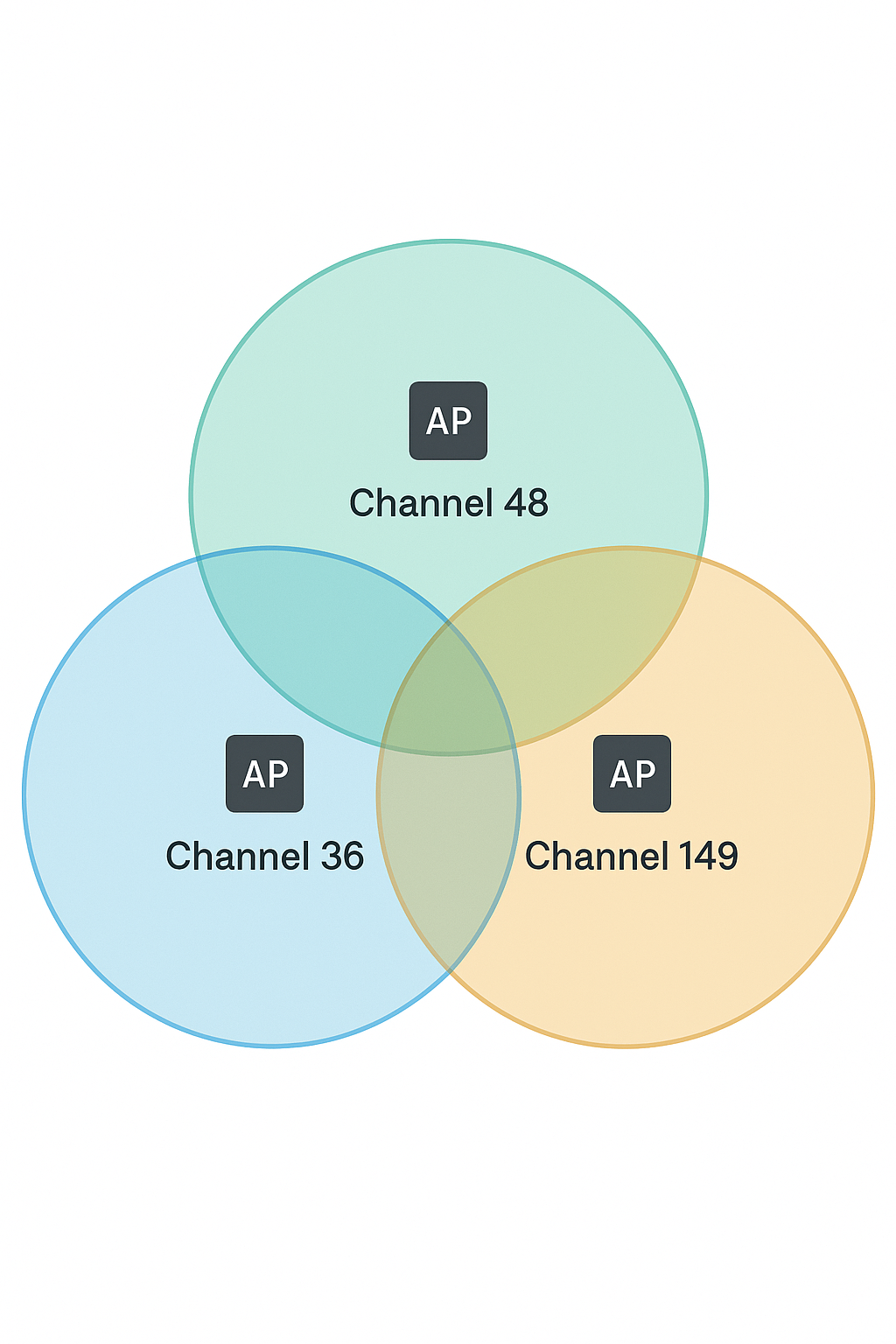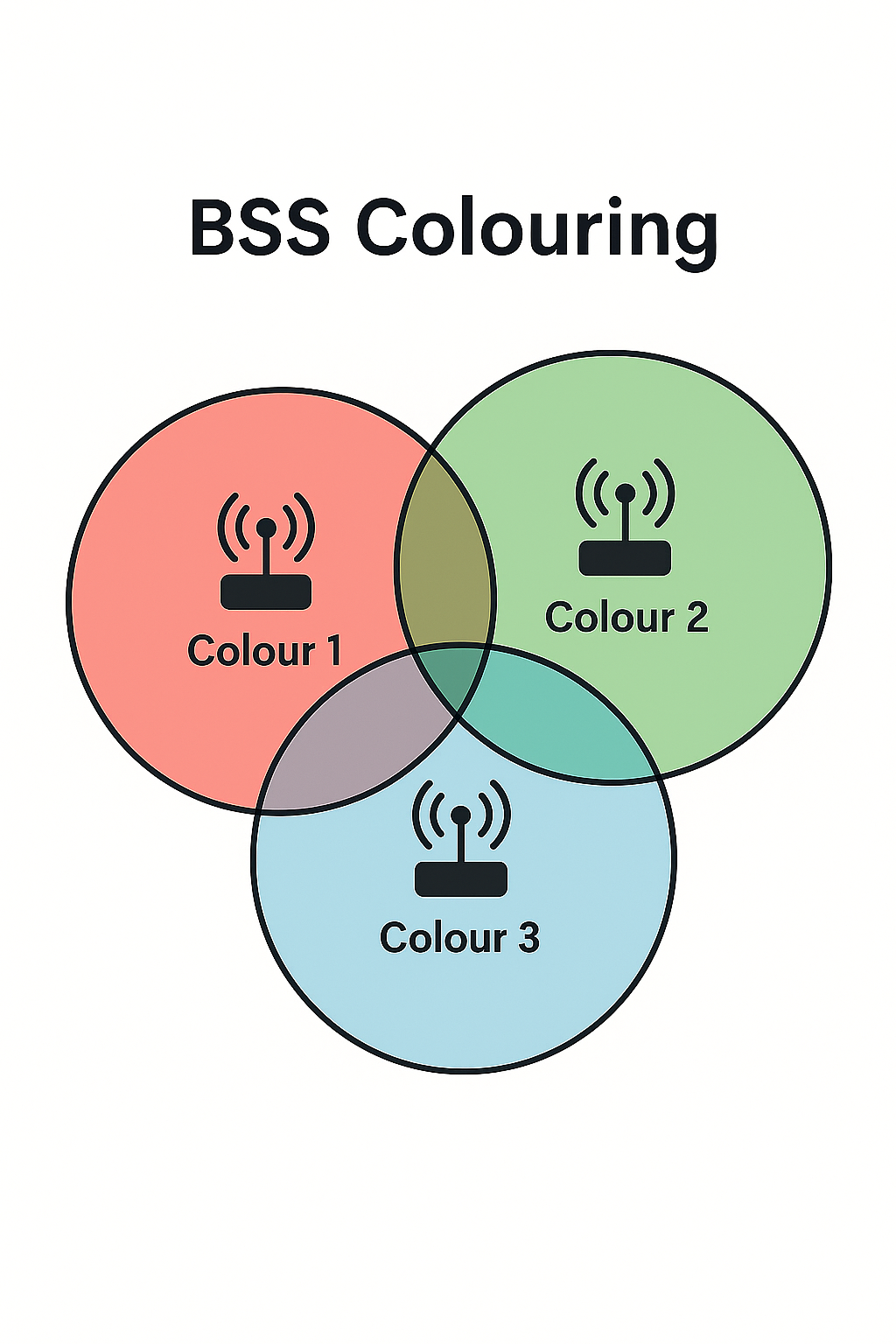Channel Planning, manual, full auto or hybrid?
One task that never fails to remind me why I love working in wireless design is channel planning. It’s one of life’s simple pleasures for me. Even with AI and a million and one tools at my disposal to help with channel planning, I still like to do it manually on a floor plan with pen and paper. Old school, I know, but sometimes the old ways are the best!
I like to visualise it first, and this is even more relevant for me in multi-floor deployments. The added complexity by the vertical makes it deliciously complex and something I genuinely relish.
Now I’d be lying if I said I don’t use any tools. Once I’ve got my cave drawing, I use tooling to validate my design, tweaking where needed. Starting manually forces me to think and keeps me learning, something I am a big advocate for. Wi-Fi is a shared medium, assuming (I have a saying about assumption but I’m not repeating it here) RF around you will behave is a brave move. You do have to “love thy neighbour”
As of right now I’d place myself firmly in the hybrid channel planning camp. This is through trial and error and many deployments, in varying environments. Getting it wrong and then getting it right.
In this post I am going to share how I see spectrum and how I plan channel usage.

Physical environment
A large part of channel planning is down to the physical environment and the existing RF in the space. If you can’t get to site yourself, make sure you have accurate floor plans, photos of the site including rooms and any areas of interest, maybe even some videos and the two most important things… wall attenuation values and neighbouring RF signals.
If you don’t have these, you will need a lot of lady luck on your side!
Wall attenuation is critical for all bands of the 802.11 standard especially 5Ghz and 6Ghz. It’s easy to measure: place an ap one side of the wall, you the other with a device to measure the signal, easy. Even if you only have an hour on site, you can measure a good amount or the important ones.
Secondly thy neighbour. If you don’t have a spectrum analyser or a tool that has one built in, a basic channel analyser can be lifeline. It will show you what’s in spectrum from a 802.11 point of view, what widths are the 5Ghz channels and which channels they’re on. Is someone using a 40Mhz channel width on 2.4Ghz at channel 7, kiss that spectrum goodbye. You’ll have ACI and CCI, and not much you can do about it. Marking on the floor plan where each measurement was taken will really help you design
Back to basics
I think this is what I probably enjoy the most going back to basics. It reminds me of what made me fall in love with wireless. Whether is your first for fortieth it’s good to remind ourselves of the basics:
· 2.4Ghz | 20Mhz Channels | 3 non-overlapping channels 1,6,11
· 5Ghz | 20, 40Mhz Channels | 24 non-overlapping channels @ 20Mhz or 12 non-overlapping channels @ 40Mhz [1][2]
· 6Ghz | 20, 40, 80Mhz Channels | 24 non-overlapping channels @ 20Mhz, 12 non-overlapping channels @ 40Mhz, 6 non-overlapping channels @ 80Mhz and 3 non-overlapping channels @ 160Mhz [3]
[1]Disclaimer some of the non-overlapping channels within the 5Ghz range are in UNII Band B and are shared by radar DFS channels and they are subject to change if radar is detected on that channel.
[2]Disclaimer I am referring to the licence exempt channels, including portions of Band C.
[3]Disclaimer I am governed by the ETSI and Ofcom and all my channels specification are based on my regulatory body. I am aware other parts of the world have a different number of non-overlapping channels. It makes me jealous.
Now the disclaimer is out the way, its worth noting non-overlapping channels themselves are not technically non-overlapping. The tail of one may bleed into the. This is physics, unfortunately, and is not often shown in channel analysers or spectrum analysers but the ACI (adjacent channel interference) is minimal, but it can be worth bearing in mind in AP dense and high power environments.
ACI and CCI
After a while in Wi-Fi design, you’ll get used to these terms, even if you are the only one working on wireless within your business (lucky you!).
ACI. The best way to explain this is imagine you are having a conversation in a room with another person. Then add two more people talking in the doorway to that room, it’s a little off putting and it interferes with your conversation. That is ACI.
CCI (co-channel interference). Lets use the same analogy, but this time the two people are stood next to you having a conversation. It’s very distracting, interfering with your own conversation, making it hard to understand. That is CCI.
I cannot stress this enough, you have to try and avoid both of these as much as you can.
Iterations and channel selection.
There will be multiple iterations of your channel plan, from design to deployment even into validation, if your environment is high tenant turnover.
2.4Ghz is probably the hardest to plan for, using only three non-overlapping channels. I use different methods and techniques to help with this, turning off 2.4Ghz radios in APs and making sure we only use 20Mhz channels on 1, 6 and 11. 2.4Ghz band handles attenuation better than 5 and 6Ghz, so its possible to cover multiple rooms with one AP. Be mindful of the hidden node issue when designing this way. I often find the 2.4Ghz band to be very congested, so the site survey data can be a life saver here.
5Ghz starts to get “easier”. My designs consist of 20Mhz channels to help channel re-use, and I’ll introduce 40Mhz channels in areas that have a clean RF environment that require high bandwidth throughput.
Two things with the 5Ghz band are DFS and higher channels UNII band B and C can suffer more from free space path loss and suffer from greater attenuation from physical obstructions, as they are at the higher end 5Ghz spectrum. Designers may increase the EIRP slightly to compensate. DFS is shared with radar, so you may have a perfect static channel plan, if your client is near a dock or airfield and then you are seeing APs switch to different channels ruining your perfectly orchestrated channel plan.
6Ghz is a bit of an free frontier with very little usage currently. It does not suffer from DFS, but it can be subject to a fair bit of regulatory red tape. There are plenty of channels available, to not worry about channel re-use, if you are wanting to use 80Mhz of 160Mhz channels, you are back to a similar number of non-overlapping channels as 2.4Ghz. Here is the big one, it cannot pass through materials very well so it is a trade-off you can reuse the channels more liberally, you need to dial in your EIRP carefully and with the client experience in mind.
When to take the wheel
When to take the wheel on channel planning can be difficult to decide. Sometime the RRM (radio resource management) can make better decisions than we do, as engineers, we sometimes struggle to accept that. I’ll usually introduce the APs to site preconfigured with a semi-static channel plan. For areas with clean RF, I will assign a channel in all bands. In an area I suspect problems, I’ll leave it on auto and let the RRM do its thing, with my predefined settings like channel width and channel range. Then I review it periodically after the install.
If all is ok and the APs have not been jumping around like grasshoppers, I’ll leave them. Down the line I know the RRM will make the right decision for me, even after I am long gone. If I do start noticing issues for example high retry rates, I may dial in that AP’s settings to make things more predictable and stable. I’ll be honest, this something I have struggled to teach and pass on.
Lastly on taking the wheel, a noteworthy mention is band steering. This can help offload compatible clients from a congested 2.4Ghz band to a less congested 5Ghz or 6Ghz band. It can assist sticky clients, hinting to capable, bandwidth intensive or latency sensitive clients that better options are available.
However, this is not a magic pill to fix all your channel issues. It boils down to a fundamental part of Wi-Fi the client. The client must support band steering and choose to take the hint and move to the other band.
Added complexities
There are some quirks to channel planning. Multi-story buildings provide a brilliant challenge. Ideally we don’t want to stack AP’s on top of each other. Some level of distribution is needed to avoid any back bleed of ACI or CCI, which can severely impact performance. This often results in high retry rates caused by collisions, with hidden nodes taking up the airtime Triggering RTS/CTS. RTS/CTS (request to send clear to send) is an optional, dynamically enabling mechanism of the CSMA/CA (carrier sense multiple access collision avoidance) protocol, to help reduce collisions. BSS Colouring introduced in 802.11ax has helped with OBSSs (overlapping basic service sets) and channel reuse but ideally, we still want to avoid CCI wherever possible.

Secondly, there’s IoT. IoT focuses much more on transmission resilience than throughput, prioritising delivery over speed. It often uses earlier revisions of the 802.11 standard such as B, G and N using DSSS and OFDM to ensure the payload is delivered. Due to the lower maximum throughput of these standards, we can sometimes be left waiting for the transmission to finish before we can take advantage of our new shiny 802.11be client get a chance to speak.
Thirdly, and this is going to be brief, when using wireless meshing (IEEE 802.11s) the backhaul radio, normally 5Ghz at this point in time, it will use a SCA (single channel architecture) I mention this because it’s one of the very few applications where using a single channel is not only expected, but the norm.
Lastly, sometimes you cannot win. No matter how hard you plan and try, the airwaves are just too congested. It’s important to find out early on. If you think this is the case, it’s essential to communicate it to your customer and set realistic expectations around performance.
Validation
You have to validate your coverage quickly, but give the channel plan time to settle. Do it three to four days after the install if you are using an RRM or up to a week in high density environments (each vendor has its own default value which is worth investigating and understanding).
I am not saying leave it alone for a week and walk into chaos. You may find area’s where you can take control, and others where its better to let the RRM lend you a helping hand. I like to start with a channel analyser first to see how congested it is before moving to a spectrum analyser to check for anything that isn’t 802.11.
After this, I’ll use iPerf to check the throughput, as well as other tools (I’ve been using tamograph recently) to show the PHY rate and jitter in the area I am validating. This gives a good indication on how clean the spectrum is around you. It also helps you to monitor how it acts with other clients contending for access and shows what the retry rate while the test is running. A note on iPerf, I always go for a bidirectional test as its very rarely a one-way street.
Wrapping up
As I wrap this blog post up and add another two topics to the ever-growing list (AP load balancing and BSS colouring), I want to leave you with this. Channel planning although on the surface is just numbers jotted down on a paper floor plan, blissfully simplistic. It is a living, breathing, dynamic and ever-evolving process that deserves your time, whether you are deploying two or two hundred access points.
I’ll leave it with a very famous line “fail to prepare, prepare to fail”.
